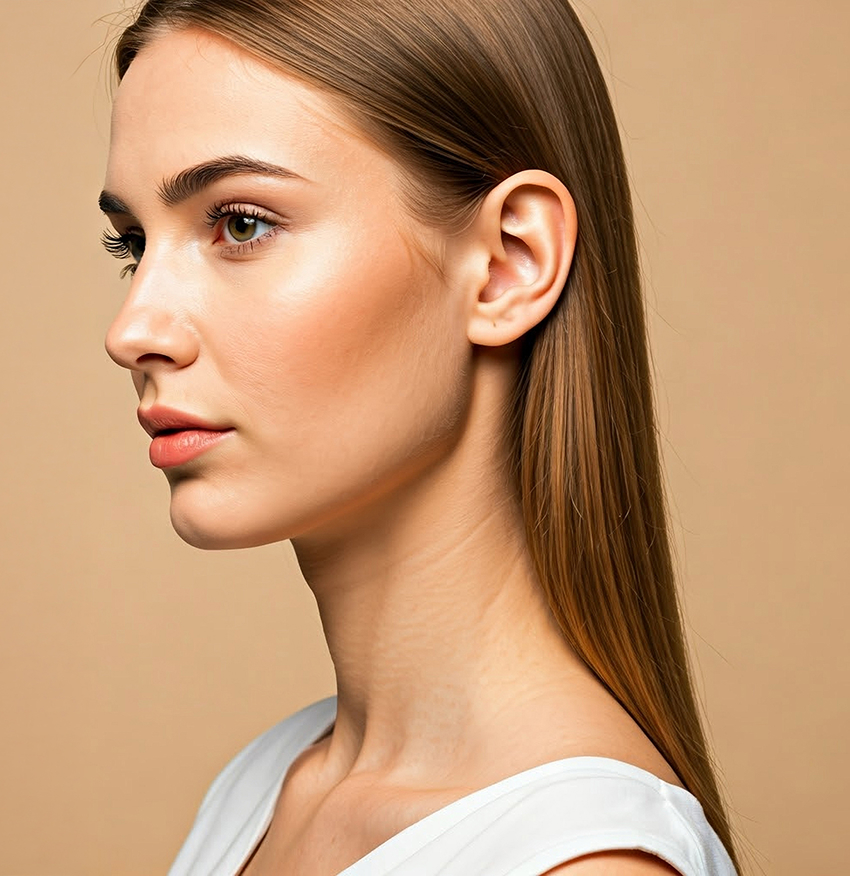A swollen earlobe can be painful and alarming. Whether from infections, piercings, or allergies, understanding the causes is key to relief. There are several causes for swollen earlobes and ear canals, each with a distinct set of symptoms and remedies. We shall explore the most common causes of these swellings in this part, therefore clarifying problems that many might find puzzling or even frightening.

Why Is My Earlobe Swollen?
Common reasons include irritation from piercings or heavy earrings, allergic reactions/contact dermatitis (like nickel), mild infections, a bug bite, a cyst, or—after a hit to the ear—an auricular hematoma. See a doctor if swelling is severe, warm/red with pus, or doesn’t improve in a few days.
There are several proactive measures one can take to maintain the health and integrity of their earlobes.
Piercings and Earrings
The shape and size of tunnels can stretch and weaken the delicate skin of the earlobe.
For millennia, piercings—especially in the earlobes—have been a common means of decoration and self-expression.
But along with this beauty regimen comes the obligation of knowing how it could affect ear health. The strain hefty earrings produce is one of the most often occurring problems connected with ear piercings. These earrings can gradually stretch the connective tissue of the earlobe, causing elongation or perhaps a whole split.
The sensitive and easily injured connective tissue of the earlobe This tissue can deteriorate and the ear lobe will droop from the pull of heavy earrings. Extreme circumstances can cause split earlobes, a disorder in which the ear lobe splits usually near the site of the piercing. This influences not only the ear’s appearance but also, should not be neglected quickly, could cause problems.
Allergies and Dermatitis
Common medical disorders that can cause ear swelling—including a swollen earlobe—are allergies and dermatitis. Affecting many areas of the body, including the ears, these disorders sometimes show as an inflammatory reaction to varied causes.
Contact dermatitis is one common skin ailment that could lead to ear swelling. This results from the skin reacting to specific chemicals in cosmetic products metals in earrings or other materials the skin comes into touch with. Exposed to allergenic materials, the delicate earlobe can rapidly become red, swollen, and irritated.
Poison ivy is another often-occurring allergen that could compromise the earlobes. The unpleasant oils in someone brushing against this plant and then touching their ear can transfer and cause a localized allergic reaction. Often the outcome is a swollen, itchy, occasionally painful ear lobe.
Trauma, injury, and infection
Though there are several causes for ear injuries, contact sports and violent trauma are among the most often occurring ones. Because of the nature of their activities, contact sports like boxing or rugby sometimes cause cauliflower ear in addition to increased risk of ear injuries. A strong hit to the ear can cause swelling, great pain, and possibly structural damage.
Other major causes of ear enlargement outside physical trauma are bacterial infections. A bacterial skin infection can arise from a damaged protective barrier, like from an insect bite or a hair follicle becoming irritated. Particularly bug bites can bring germs into the skin, therefore raising the likelihood of illness. Once compromised, the region may turn red, bloated, and painful.
Many times advised to help with bug bite inflammation and itching is hydrocortisone lotions. Still, it’s important to contact a doctor if the swelling lasts or if there is extreme pain. Sometimes oral antibiotics are recommended to fight the bacterial invasion, particularly in cases of a deep or broad illness.
Case Study
Restoring a Swollen, Stretched Earlobe
(Real Patient Review)
“Dr. Lozada did such a great job fixing my stretched earlobes. They look amazing.”
Lisa L.
Earlobe Repair (Lobuloplasty)
Lisa came in with a swollen earlobe and a stretched piercing hole from years of piercings and heavy earrings. Her goals were simple: reduce the swelling, fix the shape, and be able to wear small studs again—without pain or redness.
- Off-and-on earlobe swelling after wearing earrings
- Tenderness at the old piercing site
- No fever, no drainage, just a stretched slit that sometimes puffed up
To keep Lisa safe and make sure we treated the right thing, we ruled in/out common causes of earlobe swelling:
- Piercings irritation (most likely in her case)
- Allergic reactions/contact dermatitis to nickel or products touching the ear
- Infection (earlobe or ear canal)—no signs here
- Bug bite—not consistent with her pattern
- Cyst (sebaceous cyst)—no bump found
- Auricular hematoma—that’s usually from a big hit to the ear; not the case
- Cauliflower ear—that’s cartilage damage; the earlobe is soft tissue, so not a match
- In-office earlobe repair: tiny wedge excision to remove stretched tissue
- Precision closure: layered sutures for a smooth, natural curve (helps prevent notching)
- Comfort first: quick local numbing for a pain-free visit
- Allergy-safe plan: switch to nickel-free (titanium/14k+) jewelry after healing
- Aftercare: keep it clean and dry, a thin layer of ointment, no earrings while healing
- Re-piercing: planned at ~8–12 weeks using sterile technique (and light studs)
- Swelling settled as the tissue healed
- Natural shape restored; nearly invisible scar tucked into the ear’s edge
- Back to wearing small studs comfortably
- Happy patient, simple recovery, no more swollen earlobe flare-ups
- A swollen earlobe is often from piercings, irritation, or mild infection—but we always check for other causes (allergy, bug bite, cyst, auricular hematoma, or ear canal issues).
- Stretched or split earlobes are very fixable with a quick office procedure.
- Prevent problems: choose light earrings, avoid sleeping in them, and go nickel-free if you’re sensitive.

How To Prevent Earlobes From Drooping
Although over-the-counter painkillers can help many swollen earlobe problems, it is always best to avoid the problem from starting at all. Though delicate, Earlobes are important for our whole look. Many things can cause their drooping or destruction over time.
Fortunately, one may keep the integrity and health of their earlobes by following simple preventive steps. Many common earlobe problems can be avoided by people knowing about hazards and following preventative measures. We’ll go over doable actions in the next sections to help your earlobes stay strong, healthy, and damage-free.
Keep hydrated and moisturize daily
Maintaining the flexibility and health of the skin—including that of the earlobes—depends critically on hydration. Drinking plenty of water daily guarantees that the skin stays flexible, so lowering the chance of dryness and possible injury. Likewise, moistening the earlobes will improve their resistance even further. Using a light moisturizer helps the skin stay naturally moist, so avoiding dry or flaky conditions.
Keeping the ears clean is also really crucial. Dirt and accumulation could cause skin problems, hence frequent cleaning helps to avoid consequences. Maintaining daily moisturizing and drinking enough water will help your earlobes be generally healthy.
Before and After Earlobe Photos
* All patients are unique and individual results may vary.
Stop smoking and eat healthy
Among the several negative impacts smoking causes on the body is less suppleness of the skin. The damaging chemicals in cigarettes break down collagen and elastin, the vital proteins that keep the skin’s stiffness. This can cause the skin—including the earlobes—to droange prematurely. Conversely, a balanced diet high in vitamins, minerals, and antioxidants can help the skin remain healthy and supple.
Foods heavy in vitamin C, for example, help to produce collagen. Those who give a nutritious diet priority and stop smoking will greatly enhance the appearance and condition of their earlobes, therefore ensuring they will remain robust for years to come.
Get Enough Sleep; Don’t Go to Bed With Earrings
General health depends on enough sleep, which also helps the skin to be rejuvenated. The body heals and renews skin cells during deep sleep, therefore improving their flexibility and look. Regularly skipping rest can cause tired-looking skin and over time help delicate parts like the earlobes sag.
Moreover, wearing earrings—especially thick or dangling ones—right before bed might strain the earlobes unnecessarily. Stretching or perhaps tearing may follow from this. One can greatly lower the danger of earlobe injury and preserve their natural shape and health by making sure one gets enough sleep and takes off earrings before bed.
Philadelphia’s Premier Double Board Certified Facial Plastic Surgeon & Rhinoplasty Specialist.
Dr. Lozada is a facial sculpting expert who can help you achieve your desired aesthetic results.

Avoid Tunnels and Heavy Earrings
Although earrings can be a great accent, thicker earrings run a danger to the earlobes. These earrings can stretch and weaken the delicate skin of the earlobe over time. Extended strain from this can cause thinning, elongation, and occasionally fractured skin. Likewise, although a trendy fashion statement, ear tunnels can greatly enlarge the earlobes.
Ignorance of proper technique or severe behavior can result in permanent injury. Choosing smaller earrings and using prudence with ear-stretching techniques will help you keep your earlobes healthy and attractive.
Massage Your Earlobes and Make Use of Collagen Supplements
Massaging the earlobes helps to keep their flexibility, boosts blood flow, and promotes healing. Frequent mild massages can help to maintain the earlobes firm and help to prevent sagging. Moreover, skin health depends much on collagen. Collagen production declines with age, which causes skin elasticity to drop as well.
By supporting the structure of the skin—including that of the earlobes—taking collagen supplements helps them to preserve their resilience and form. Although most people cure swollen earlobes with over-the-counter drugs and home treatments, it’s important to know when the problem calls for more than a basic remedy. Some cases call for specific medical attention, particularly those involving ongoing or severe symptoms.
When Is It Time To Consider Plastic Surgery?
Preventive care for our earlobes is of utmost importance. Regular maintenance and attention can stave off many issues, ensuring that our earlobes remain healthy and aesthetically pleasing. However, there are instances when the damage becomes too severe, and no home remedy or over-the-counter solution can provide relief. In such cases, medical intervention becomes necessary to repair the damage to the earlobe. It’s crucial to choose a facial plastic surgeon with the expertise and experience to address these concerns effectively.

Why should you choose Dr. Lozada for your swollen earlobe?
Dr. Kirk Lozada is a double board-certified plastic surgeon who specializes in cosmetic ear surgery . With years of experience in exclusively cosmetic facial surgery, he has the skills to address issues ranging from excess skin to more intricate earlobe surgery procedures. Additionally, for those seeking non-surgical solutions, Dr. Lozada is proficient in administering dermal fillers , offering a comprehensive approach to earlobe care. If you believe it’s time to consider medical intervention for your earlobes , we invite you to contact us via phone or through our contact page to explore the best options with Dr. Lozada.


